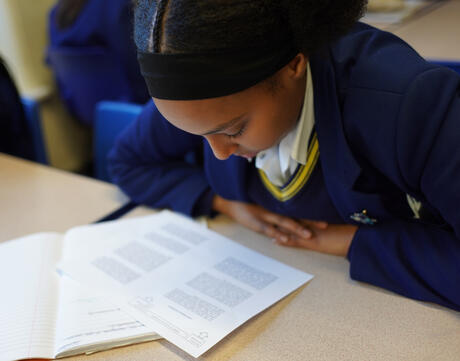
Learning to Infer
Overview
About This Teaching Strategy
Inferencing requires students to take something from the text, combine it with some existing background knowledge, and make a new connection. It is a vital skill that students must develop in order to interpret and write convincingly about the texts that they are studying. Students, however, often need support in moving beyond the literal meaning of a text to make inferences about the significance of any language and/or content. Teaching students how to infer, naming that process for them, and giving them opportunities to practise inferring orally will help prepare them to transfer that skill to their written analysis.
Procedure
This teaching strategy has been adapted for use in UK classrooms from our Common Core-Aligned Writing Prompts supplements.
Steps for Implementation
Inferencing Frameworks
The options below show two specific scaffolds to teach students how to infer. Choose one to use with your students.
Unlimited Access to Learning. More Added Every Month.
Facing History & Ourselves is designed for educators who want to help students explore identity, think critically, grow emotionally, act ethically, and participate in civic life. It’s hard work, so we’ve developed some go-to professional learning opportunities to help you along the way.
Exploring ELA Text Selection with Julia Torres
On-Demand

Working for Justice, Equity and Civic Agency in Our Schools: A Conversation with Clint Smith
On-Demand

Centering Student Voices to Build Community and Agency
On-Demand
















